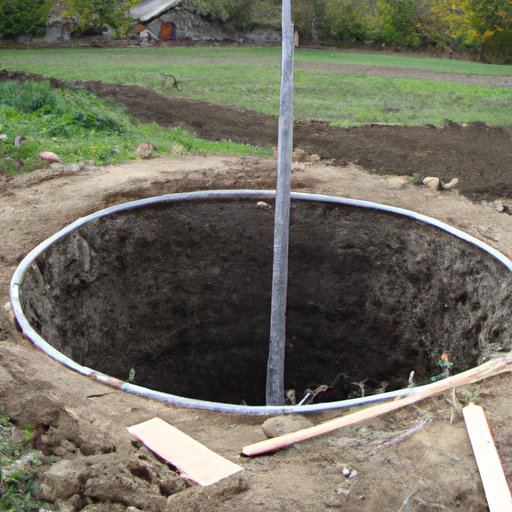Introduction
A dry well is a simple but effective way to manage stormwater runoff and reduce the risk of flooding. The basic premise is that water runs off the roof or property and is directed into a large, shallow pit filled with gravel and covered with soil. This allows excess water to be absorbed by the ground rather than overflowing onto nearby properties or roads.

Benefits of Installing a Dry Well
Dry wells have several advantages over traditional drainage systems. First, they can improve the drainage in areas where the soil has poor drainage or is too compacted to absorb water quickly. They also help reduce the risk of flooding, which can cause significant damage to homes and other structures. Additionally, dry wells are relatively inexpensive to install and maintain, making them a cost-effective solution for managing stormwater runoff.
Design and Installation Basics
When designing and installing a dry well, it’s important to choose the right location. It should be placed in an area that receives a lot of runoff from the roof, driveway, or other parts of the property. It should also be located away from any underground utility lines or other sensitive areas. Once the ideal location has been identified, the dry well can be dug out and lined with a layer of gravel.
The next step is to connect the dry well to the existing drainage system. This can be done by running pipes from the existing gutters and downspouts to the dry well. Alternatively, if the existing drainage system is already connected to the sewer or septic tank, the connection can be made directly to the dry well instead. Finally, the area around the dry well should be backfilled with soil to keep it secure.
Common Problems and Troubleshooting
Although dry wells are generally reliable, they can still suffer from some common problems. Clogging and blockages can occur when leaves, dirt, and other debris accumulate in the dry well and cause water to back up. This can also lead to standing water, which can create a breeding ground for mosquitoes and other pests. Another issue is leaking, which can occur if the dry well isn’t properly sealed or if the pipe connections aren’t tight enough.
If any of these problems occur, the first step is to clean out the dry well and remove any debris that may be blocking the flow of water. If the problem persists, then it may be necessary to check the pipe connections to make sure they are secure. If there is still an issue, then it may be time to call a professional to inspect the dry well and make any necessary repairs.
Maintaining a Dry Well
To ensure that a dry well continues to operate effectively, it’s important to perform regular maintenance. This includes checking for leaks, cleaning out debris, and removing any sediment that has built up in the dry well. Additionally, it’s a good idea to perform routine inspections to make sure everything is working properly and that the dry well is still structurally sound.
Advances in Dry Well Technology
In recent years, there have been several advances in dry well technology. Prefabricated dry wells are now available, which can be installed quickly and easily. These systems are designed to fit into existing drainage systems, making them a great choice for home and business owners who want to upgrade their drainage system without having to dig out a large area. Additionally, lined dry wells and perforated basins can be used to further improve drainage and reduce the risk of flooding.
Conclusion
Dry wells are a great way to manage stormwater runoff and reduce the risk of flooding. They are relatively inexpensive to install and maintain, and newer designs offer improved performance and easier installation. By following the steps outlined here, homeowners and businesses can install a dry well and enjoy the benefits of improved drainage and reduced flooding risk.
(Note: Is this article not meeting your expectations? Do you have knowledge or insights to share? Unlock new opportunities and expand your reach by joining our authors team. Click Registration to join us and share your expertise with our readers.)
